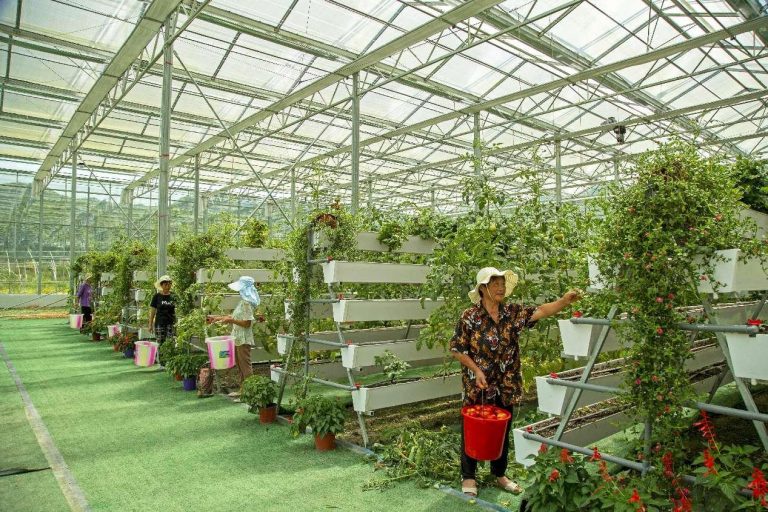
By Yin Shuanghong, China’s first prefabricated high-rise vertical factory, the phase-1 project of the Pingshan New Energy Vehicle Industry Park in Shenzhen, south China’s Guangdong province, was completed and delivered in April this year.
Thanks to the application of smart technologies, the construction period of the factory was saved by 15 percent, water and electricity usage by 20 percent, and waste discharge by 20 percent.
The high-rise vertical factory enables intensive land use and is conducive to resource recycling in the industrial park. It is the epitome of the green development of the manufacturing sector.
Promoting green and low-carbon economic and social development is a key part of achieving high-quality development. In recent years, China has made significant progress in fostering new growth points for green and low-carbon development.
In the manufacturing sector, the production of solar cells and charging piles increased by 63.2 percent and 34.2 percent respectively in the first three quarters of this year, while the production and sales of new energy vehicles grew by over 30 percent year-on-year.
In the energy industry, as of the end of September, the installed capacity of solar power generation increased by 45.3 percent compared to the previous year, and wind power installed capacity by 15.1 percent.
Green technologies and products continue to emerge in various sectors and industries, effectively promoting the optimization of industrial structure and demonstrating a strong momentum for industrial upgrading.
As a new driving force, the growth of the green industry can create a broader space for economic development. Green, circular, and low-carbon development is the direction of today’s technological revolution and industrial transformation, and the most promising field for development. A better grasp of the opportunities for green transformation can take the initiative and gain a favorable position in future competition.
According to data from the General Administration of Customs, the total exports of electric vehicles, lithium-ion batteries, and solar batteries reached 798.99 billion yuan ($109.83 billion) in the first three quarters this year, a year-on-year increase of 41.7 percent. China’s leapfrog development in green industries fully demonstrates the importance of pursuing sustainable economic growth.
Green development is sustainable. Only by laying a solid foundation for green development can China achieve high-quality development in the future. China has great potential in this regard and can build a number of growth points.
Currently, the country is actively promoting concerted efforts to cut carbon emissions, reduce pollution, expand green development, and pursue economic growth. It prioritizes green transformation and upgrading of industries, accelerates the cultivation and expansion of green and low-carbon sectors, actively develops green technologies and products, and makes the economy greener, so as to enhance the potential and momentum of development.
China’s renewable energy industry is developing rapidly, and the country leads in various fields such as energy equipment, water-saving equipment, and pollution control technologies.
New ecological industry models, including urban modern agriculture, eco-tourism, and rural complexes are also rapidly growing. Today, eco-friendly products have more ways for financial gain.
It is believed that as China continues to pursue green development, the Chinese economy will become even greener in the future.
Green development is an all-round and revolutionary transformation of production methods, lifestyles, ways of thinking, and values. To promote the growth of green industries, it is necessary to adhere to a systemic perspective and coordinate the greening of production, distribution, consumption, and other aspects. It is important to actively guide and mobilize the entire society to participate in green development.
With the continuous advancement of Chinese modernization and the improvement of people’s living standards, the concept of green development has permeated all aspects of Chinese people’s lives.
The demand for green upgrading and transformation of traditional industries, as well as the demand for green consumption, have given rise to a huge green market, continuously enhancing China’s development potential and momentum.
By further opening up new areas and creating new advantages, China is striving to promote economic development that not only maintains reasonable quantitative growth but also achieves steady qualitative improvement, allowing the people to have a greater sense of achievement, fulfillment, and security in a beautiful ecological environment.










